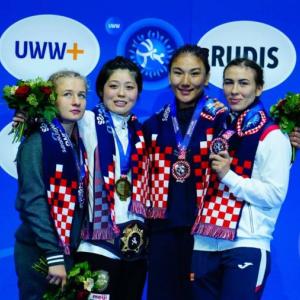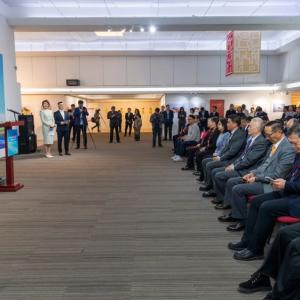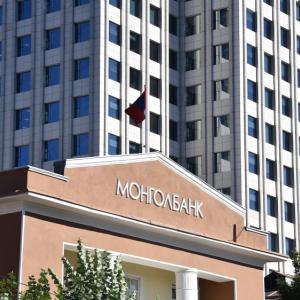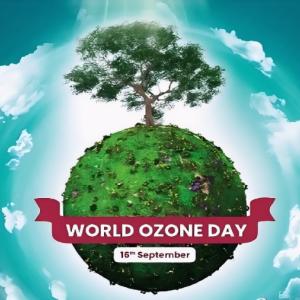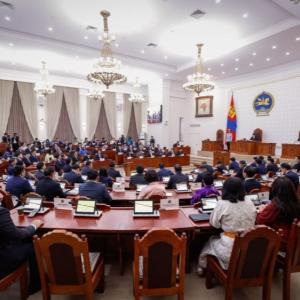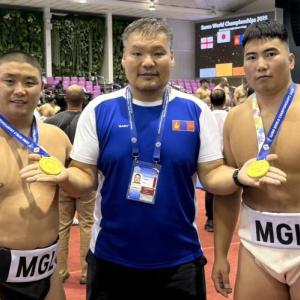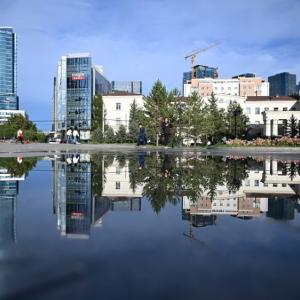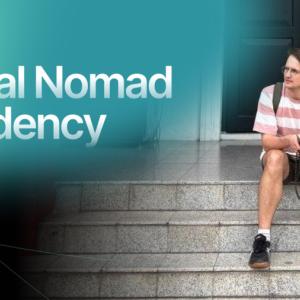Dancer B.Erdenebayar: I aspire to manifest Mongolia through my dances
The Mongol Messenger
Ulaanbaatar /MONTSAME/. The Mongolians hold a long history and tradition of dancing. There are varieties of dance styles that demonstrate the ways of life and mindsets of the various ethnic groups of people of the Mongols. Among them, biyelgee, tsatsal, khatirakh, tsaatan and circle dancing have long been traditionally preserved until present days and are still embody the fundamentals shaping the modern Mongolian dancing. An ethnic dancing that conserves the complex traditional and heritage elements and movements articulates the unique livelihoods, mindset and cultures upheld by a certain nationality and it can be immersed with the elements of ballet, jazz, classic and historical types of dances while unfailingly secures its own distinct identities.

Mongolian dancer B.Erdenebayar, from the
Mongolian Grand Theatre of National Art successfully represented Mongolia at
the 17th Busan International Dance Festival (BIDF). The artist took first place
in ethnic dance category in the international dance competition held under the
auspices of the country’s culture minister, gathering 282 dancers from 13
countries and 720 dancers from South Korea. He also came second in Ethnic Dance
at the 2021 BIDF The 3rd Korea Dance Grand Prix and first in the festival’s
video contest among over 120 dancers of 10 countries who submitted their
dancing videos.
B.Erdenebayar studied at the Mongolian State
Conservatory from 2009 to 2014 and has been diligently practicing ethnic dance
ever since. Four years after his graduation, Erdenebayar became a runner-up in
the ‘Perfect Dance’ dance show hosted by national USB TV channel in 2018, which
granted him the right to study at the Korea National University of Arts,
bringing him a great impetus to his dance career and the success he achieved
until today. In 2019, he also won the first place in solo folk dance at the
16th Seoul International Dance Competition.
After his performance of Ukrainian folk dance at the Seoul International Dance Competition, the fellow international dancers at the event welcomed him on backstage with standing ovation. “They were congratulating me and were quite surprised that dance in Mongolia has developed to such a high level. Also, a Ukrainian judge at the competition came to me to congratulate and invited me to visit Ukraine,” he remembers.

When Erdenebayar graduated high school, his
father persuaded him to take the entrance exam for then-Dance and Music College
– now Mongolian State Conservatory. He did so as his father said and went to
the college entrance exam with his mother accompanying him. That was the moment
he fulfilled the beginning of many of his aspirations and became a dancer.
“Because of my long c o m m u t e to school, I used to come to school very
early in the morning to rehearse and leave for home the last. Each dance that
lasts around 3-4 minutes on the stage requires dancers to train for at least
3-4 months. When I got exhausted, or felt hungry, I always thought about the
reason I chose this profession and dream about how to develop the ethnic and
traditional dancing. That made me stronger and helped me return to my rehearsal
no matter how tired my body was. The determination and hard works of those long
days are paying me off now and I am happy now.”
This time, he raised the cup at the
international competition with a Ukrainian traditional dance again. “Each folk
dance represents unparalleled features and motions. The ethnic Mongolia dance,
as we call it, is composed with contemporary features and music without losing
its principal elements. I started my dance career with Mongolian dances. My
dance coach A.Batkhuu choreographed the Ukrainian folk dance, named ‘A Man from
the Mountain’, I partici pated with in that competition. It portrays mostly the
human–nature relationship and also the inherent attributes of the humans,” says
Erdenebayar.
This time, he raised the cup at the
international competition with a Ukrainian traditional dance again. “Each folk
dance represents unparalleled features and motions. The ethnic Mongolia dance,
as we call it, is composed with contemporary features and music without losing
its principal elements. I started my dance career with Mongolian dances. My
dance coach A.Batkhuu choreographed the Ukrainian folk dance, named ‘A Man from
the Mountain’, I partici pated with in that competition. It portrays mostly the
human–nature relationship and also the inherent attributes of the humans,” says
Erdenebayar.
This time, he raised the cup at the international competition with a Ukrainian traditional dance again. “Each folk dance represents unparalleled features and motions. The ethnic Mongolia dance, as we call it, is composed with contemporary features and music without losing its principal elements. I started my dance career with Mongolian dances. My dance coach A.Batkhuu choreographed the Ukrainian folk dance, named ‘A Man from the Mountain’, I partici pated with in that competition. It portrays mostly the human–nature relationship and also the inherent attributes of the humans,” says Erdenebayar.


 Ulaanbaatar
Ulaanbaatar













